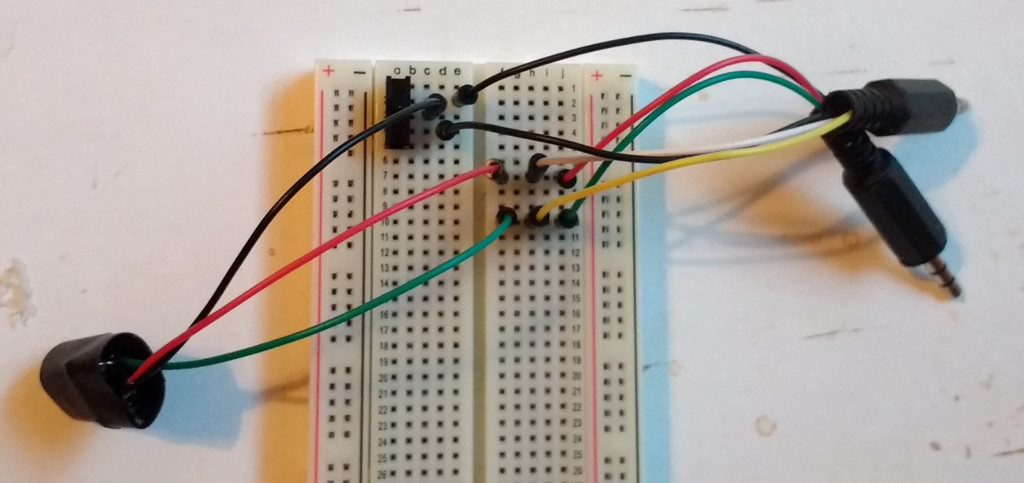Headphone Switching
This is the first (success) post for a project I've been tinkering with. Essentially I'm trying to build a KVM switch, except I don't feel the need to limit myself to USB/DVI/etc.
This week I was able to make the core circuitry for headphone (i.e., 3.5mm TRS) work. But let's not get too far ahead.
Parts
The specialized parts I'm working with are these:

Helpfully, none of them fit on the breadboard I'm using, but it's okay because neither do the wires I'm using. You'd never know they all came from the same supplier.
To work
Three leads are soldered onto each component. TRS (Tip Ring Sleeve) connectors have, as the name might suggest, three paths: a ground, and two signals. They're designed such that, when one inserts the plug into the socket, the ground is the first piece of the plug to make any contact (i.e., ground on the most outward part of the socket and the sleeve of the plug). Arbitrarily, left channel is on the tip, which leaves right in the only ring.
For the sockets I'm using (which are in fact TRS sockets, not TRRRS as the pins might suggest), there are two extra pins such that the left and right channels are the outermost. The manufacturer claims that this is for stability, but since it won't stay on a breadboard anyway, I don't know why they bothered.
For the plugs, I found it necessary to wrap each solder joint in electrical tape before re-covering because otherwise they tended to shift and accidentally make contact.
The result
Here's my final, working circuit:

I tested this by playing audio from both my computer and phone simultaneously.
The magic here is the ground switching. Having it be a single switch to move between inputs was a design goal, and this is accomplished by moving the grounds around. (Ground is black; there is no excuse for the other colors.) This results in an incomplete circuit for the "off" input, despite the two signal channels remaining wired in.
And as long as two inputs are connected, it works great. That's not to say it doesn't work great for the single input case as well - it does - just that there's a somewhat odd behavior there. If you plug in one input but not the other and send audio through, the expected thing happens and we get audio out; however, if we move the switch to the nonexistent input, you still get audio out, just at a much reduced volume. If one wanted a true killswitch, I believe this device could be connected to absolute ground, but that would require plugging it in and I'd really rather not.
Future work
I don't want to give away too much of my failures, but I do have these USB connectors sitting on my desk...